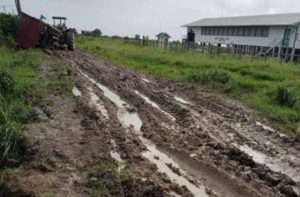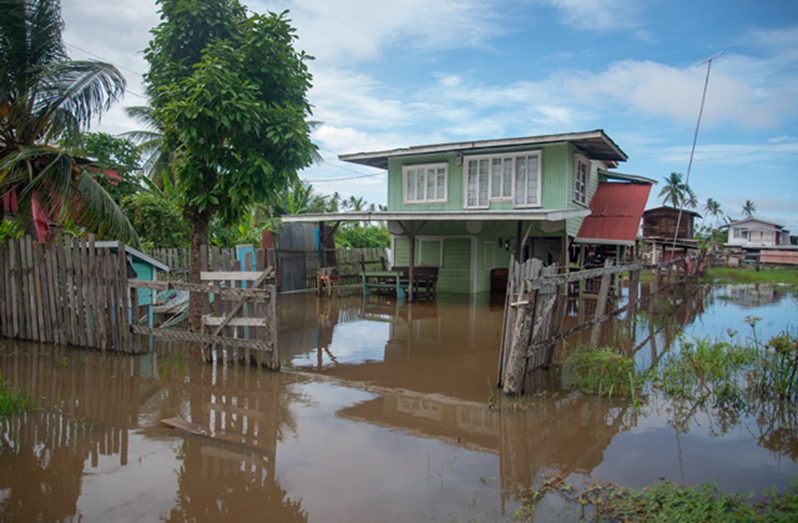— damage to farms, infrastructure being assessed
AFTER heavy rainfall and severe flooding for almost three weeks, the floodwaters in Region Six (East Berbice-Corentyne) is slowly receding, according to Regional Chairman, David Armogan.
Armogan, in an interview, on Tuesday, told the Guyana Chronicle that besides interrupting residents’ daily lives, the heavy torrential rainfall and increased flooding has also affected the region’s agriculture sector, with many reporting losses of crops and poultry.
“Well, you know that the big agriculture area that we have is the Black Bush Polder area which deals not only with rice but also with animals and poultry and cash crop,” he said.
Armogan added: “A lot of damages have taken place there (Black Bush) and in a lot of other areas, in terms of crops, people would have lost their entire cash crop. They have to go back and start all over again. In terms of the rice, luckily not too many people would have sown for the new crop.”

He stated that several animal farmers have also been affected since the floods saw many loosing their cattle, chickens and other farm animals. Kitchen gardens were also destroyed.
Meanwhile, in the Numbers 52 and 74 Villages, and the Crabwood Creek area, which are also agriculture hubs, many rice farmers have reported losses.
“All the cash crop virtually has been damaged where water would have lodged, and so people have to go back now and plant. So that is why you find that vegetable in the market right now is extremely expensive because of the fact that there is a very short supply,” Armogan stressed.
Additionally, he stated that the heavy rainfall has restricted the ability of farmers to transport their paddy, since access dams and agricultural roads are severely damaged.
“The agricultural dams, they are all badly damaged, so you really cannot go back into the next crop. They are virtually non-existent, completely damaged so in all the agriculture areas…dams have to be rebuilt so we can go back into the new crop,” he added.
He added that while water has begun to recede in some parts of the region, there are still a few communities that are affected by floods. However, in the meantime, the regional authorities are on the ground providing machinery to clear several dams and waterways.
“We have machines working to see if we can do some more exaction to let the water drain out as quickly as possible,” he told this publication.
During a virtual event on Monday, Agriculture Minister, Zulfikar Mustapha, said the current climate of heavy torrential rainfall and severe flooding is threatening the country’s agriculture sector and that now, more than ever, there is a need for a robust approach to achieve food safety and security across Guyana.
“Right now, the major sector in our country is experiencing severe disruption and that can have a serious impact on our food and the safety of our food. So, it is important to recognize that the health of people is very important and, at this junction, as we observe World Food Safety Day 2021, the first call to action is that this government must ensure safe and nutritious food for all,” he said.
He later urged agriculture stakeholders and Guyanese at large to recognize that the health of people, animals and the environment are interconnected and that any safety-adverse event, especially now with the incidence of flooding being experienced, may have an impact on public health, trade and economy.




.png)









